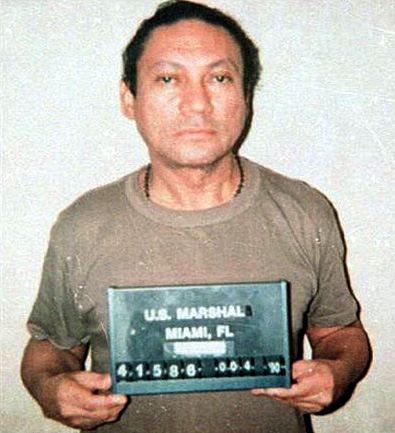
The DoD announced today that they are
sending 116 CAV to Iraq... this Fall?!
The Department of Defense announced today a replacement unit mobilized to deploy as part of the force rotation in support of Operation New Dawn. Approximately 2,700 soldiers from the 116th Cavalry Brigade Combat Team headquartered in Boise, Idaho, with elements in Montana and Oregon, will deploy in the fall of 2010.
Now pre-mob training normally takes a year, so this is pretty quick on the trigger. It'll be interesting to see how this train-up goes, and the impact it has on families.
+++
With concerns about
over-medication of US troops returning from the war, the VA and the Army are looking into non-chemical ways to help soldiers cope.
The US Army's surgeon general on Monday expressed concern about "over-medication" of soldiers returning from combat, saying the military is closely tracking how drugs are prescribed to troops.
The top medical officer in the army, Lieutenant General Eric Schoomaker, said the increasing use of prescription drugs for soldiers recovering from combat duty in Iraq or Afghanistan reflected a wider trend in the country to treat pain primarily through medication.
But he told reporters: "I can tell you that we are concerned about over-medication."
The general said that "we're very concerned about the panoply of drugs that are being used and the numbers of drugs that are being used."
"We are monitoring it very, very closely," he said.
Prescription orders for psychiatric and pain medicines for troops have increased dramatically since 2001, according to a Military Times report in March, with one in six service members on some form of psychiatric drug.
About 15 percent of soldiers said they had abused prescription drugs in the past month, according to a Pentagon survey carried out in 2008 and released in December.
Lawmakers have urged the military to examine a possible link between a rise in suicides among troops and the use and abuse of prescription drugs.
Schoomaker said he had led a review looking at prescription drugs and his task force had promoted alternatives to pain killers, including "yoga, meditation, acupuncture, movement therapy, lots of other ways of approaching pain management."
If anyone out there has been successful at dealing with pain/PTSD/etc through any combination of yoga, meditation, acupuncture, movement therapy, or any other non-chemical means, please share...
+++
Northrup Grumman can't wait to become part of the problem, and
is moving their HQ the DC bubble. Yay.
Northrop Grumman has chosen Northern Virginia as the new home for its global headquarters, ending a heated competition among Virginia, Maryland and the District for the prestige of playing host to the defense contracting giant.
Virginia Gov. Robert F. McDonnell (R) announced the decision Monday night in a joint statement with Northrop, describing the selection as a victory for what he called his administration's commitment to promoting business development.
"To gain the corporate headquarters of one of the largest global security contractors in the world is a testament to the strong business climate that we are focused on continually improving," said McDonnell, who has scheduled a news conference for Tuesday afternoon at Northrop's Rosslyn offices to discuss the move.
+++
It's fashionable to bag on PowerPoint, and we all love to do it. We've even
already posted the image referenced at the
start of this article. So why bring it up again? To point out that a bunch of the article is based on the remarks of speakers at the UNC Civil-Military Relations Conference
we live-blogged a few weeks back. Aren't we cool?
“PowerPoint makes us stupid,” Gen. James N. Mattis of the Marine Corps, the Joint Forces commander, said this month at a military conference in North Carolina. (He spoke without PowerPoint.) Brig. Gen. H. R. McMaster, who banned PowerPoint presentations when he led the successful effort to secure the northern Iraqi city of Tal Afar in 2005, followed up at the same conference by likening PowerPoint to an internal threat.
“It’s dangerous because it can create the illusion of understanding and the illusion of control,” General McMaster said in a telephone interview afterward. “Some problems in the world are not bullet-izable.”
In General McMaster’s view, PowerPoint’s worst offense is not a chart like the spaghetti graphic, which was first uncovered by NBC’s Richard Engel, but rigid lists of bullet points (in, say, a presentation on a conflict’s causes) that take no account of interconnected political, economic and ethnic forces. “If you divorce war from all of that, it becomes a targeting exercise,” General McMaster said.
Commanders say that behind all the PowerPoint jokes are serious concerns that the program stifles discussion, critical thinking and thoughtful decision-making. Not least, it ties up junior officers — referred to as PowerPoint Rangers — in the daily preparation of slides, be it for a Joint Staff meeting in Washington or for a platoon leader’s pre-mission combat briefing in a remote pocket of Afghanistan.
Last year when a military Web site, Company Command, asked an Army platoon leader in Iraq, Lt. Sam Nuxoll, how he spent most of his time, he responded, “Making PowerPoint slides.” When pressed, he said he was serious.
“I have to make a storyboard complete with digital pictures, diagrams and text summaries on just about anything that happens,” Lieutenant Nuxoll told the Web site. “Conduct a key leader engagement? Make a storyboard. Award a microgrant? Make a storyboard.”
Despite such tales, “death by PowerPoint,” the phrase used to described the numbing sensation that accompanies a 30-slide briefing, seems here to stay. The program, which first went on sale in 1987 and was acquired by Microsoft soon afterward, is deeply embedded in a military culture that has come to rely on PowerPoint’s hierarchical ordering of a confused world.
“There’s a lot of PowerPoint backlash, but I don’t see it going away anytime soon,” said Capt. Crispin Burke, an Army operations officer at Fort Drum, N.Y., who under the name Starbuck wrote an essay about PowerPoint on the Web site Small Wars Journal that cited Lieutenant Nuxoll’s comment.
In a daytime telephone conversation, he estimated that he spent an hour each day making PowerPoint slides. In an initial e-mail message responding to the request for an interview, he wrote, “I would be free tonight, but unfortunately, I work kind of late (sadly enough, making PPT slides).”
+++
We welcome your thoughts on all these articles.
By: Brant








 No really, there's
No really, there's 



 The DoD announced today that they are
The DoD announced today that they are 



